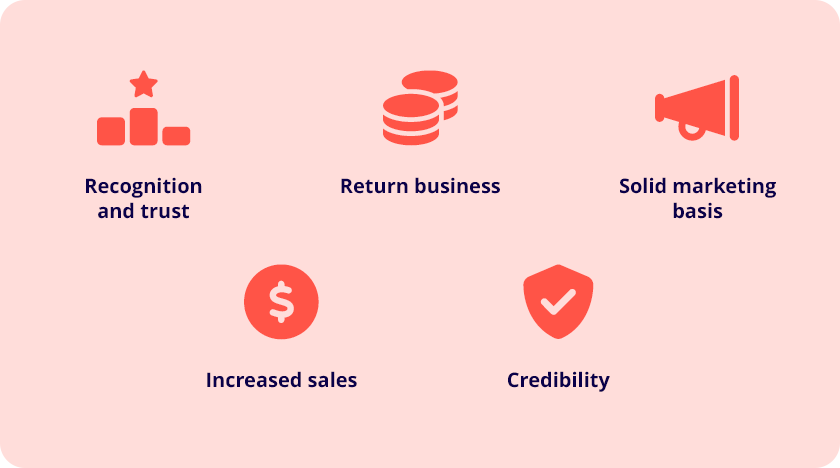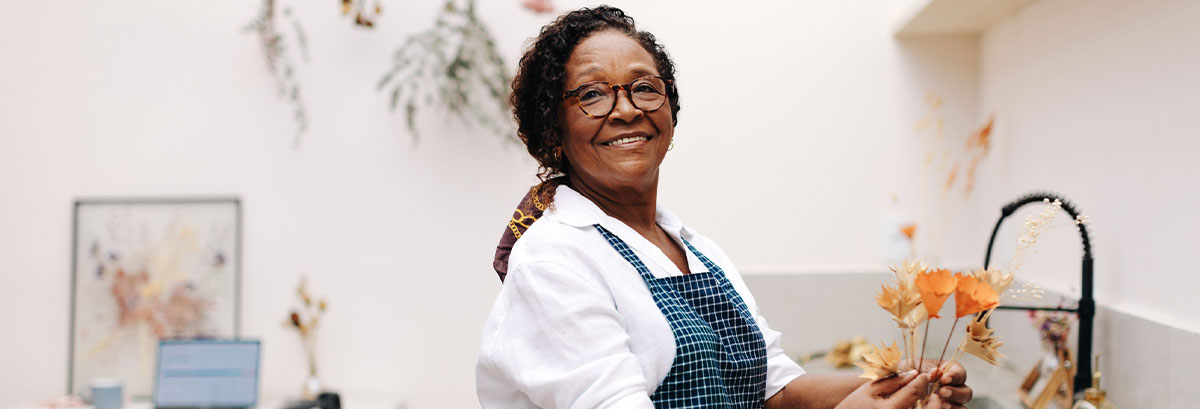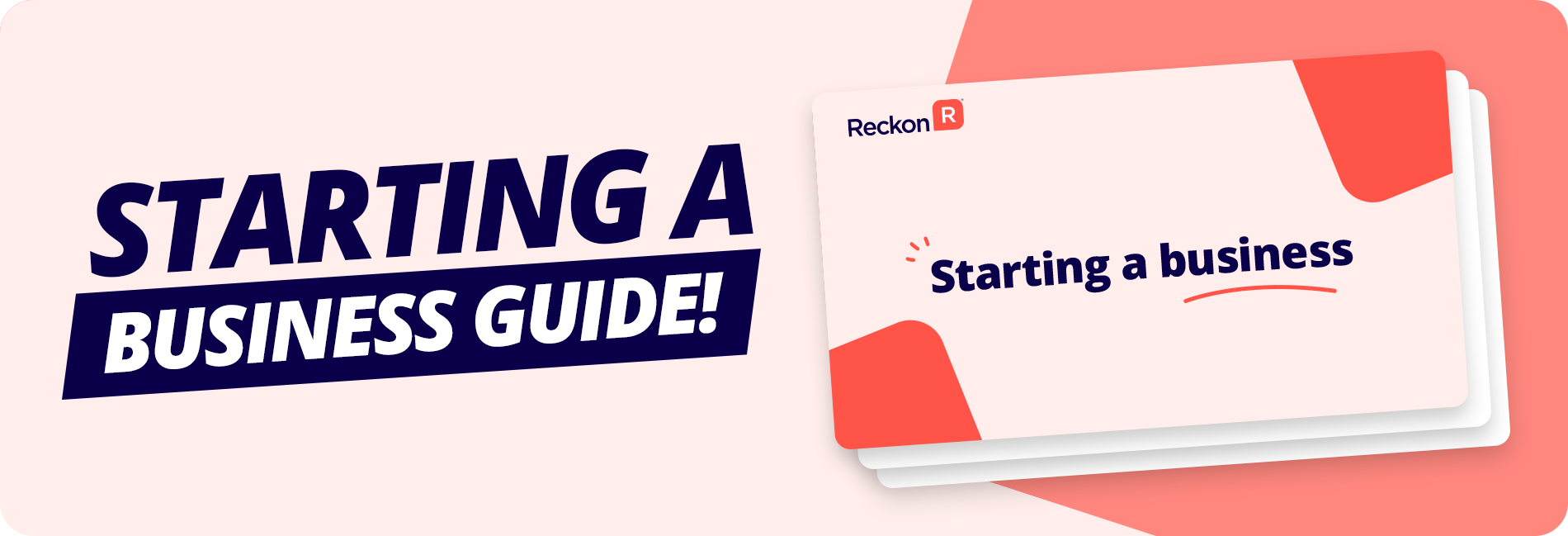Your business brand identity is one of the main reasons customers buy from you: Who are you? Why should they buy from you? What are you all about?
These questions are why you need to pay attention to brand identity and all the branding activity which accompanies its manifestation.
Why and how do you create your brand identity?
Branding and brand identity becomes more and more important as your business grows as your bigger competitors will already have this down pat.
But if you’re still a small business owner or a sole trader, it doesn’t mean you should ignore the necessity of solid branding. Forming a unique brand identity is valuable for businesses of all shapes and sizes.

Why brand?
Why create a brand identity? You should be investing in your branding from day dot, regardless of your size or infancy. It would be unwise to wait and let it develop on its own – you will reap serious long-term benefits if you put sincere effort into your branding early, such as:
- recognition and trust
- return business
- a solid marketing basis
- increased sales
- credibility.
Why do you exist?
This is the crux of your brand identity – you need a purpose behind your brand. There are a few questions you should ask yourself when defining a brand purpose. It’s best to ask this from the customer’s position:
- Who are you?
- Why am I talking to you?
- What makes you special?
- How can you solve my issues?
Brainstorm your answers to these and create a list of attributes your brand wants to embody. These attributes and purposes should inform your whole brand identity.
It’s also important to really decide who you’re speaking to – your understanding of the audience you desire as customers is imperative to your brand purpose.
Some examples of a brand purpose are:
- Tesla: “Tesla’s mission is to accelerate the world’s transition to sustainable energy.”
- Apple: “To empower creative exploration and self-expression.”
- Nike: “To bring inspiration and innovation to every athlete in the world (and everybody is an athlete).”
When you define your brand purpose, think about why people are buying from you. Everyone buys clothes because we need to wear them, but that doesn’t separate clothing brands from each other. What separates clothing brands is their purpose: how fashionable, affordable, sustainable, or comfortable they are.
Your brand identity
By homing in on the answers you gave above, you’ll come to a place where you now understand how to create a brand identity.
Now you can make a brand proposition. Create a short, two- or three-line statement that defines who you are and who you serve. Refine it and wargame it with colleagues and customers until you’re satisfied you have a solid brand proposition. Make it permanent and refer back to it as you develop your assets to keep you on task. You can even include it on your website’s ‘About’ section.
“Determine who you are and what your brand is, and what you’re not. The rest of it is just a lot of noise,” Geoffrey Zakarian, chef and TV personality.
Branding and identity development
Once you understand the vital importance of forming a comprehensive brand identity, it’s time to develop your brand identity further by putting this into practice and creating a voice for your identity.
Craft a unique voice
A ‘brand voice’ is an essential part of your business’s identity. It needs to be laid out to ‘feed’ the other aspects of your brand and to communicate effectively and consistently with your customers and prospects.
Think of your services and products. Think of your audience. Think about how you want to ‘come off’ when communicating with the market. Now use that to inform your entire tone of voice or brand voice.
The easiest way to tackle this is to think about your business as a person. What do they look and sound like? What is the personality you wish to concoct? Are they young and optimistic or wise and storied? Are they trendy or formal?
Once you have this, use it to inform your taglines, elevator pitches, logos and even colours – which is the next step in your branding identity development.
“A brand is a voice and a product is a souvenir,” Lisa Gansky, American entrepreneur.
Brand identity plan and tips
When you embark on a mission to create and cement your brand identity plan, creating brand assets sits at the end the rainbow. We’ve pondered our brand voice, created a identity, and have come to understand why we exist to our customers. Now let’s get to the nuts and bolts of your design elements.
Develop your branded assets
This is the stage of business where the excitement is still buzzing and the passion for your business idea really surges forth. If you’re truly stoked on your small business idea, ‘tasks’ like creating logos should actually be fun.
Before you engage any designers or copywriters, it pays to have a solid idea of what you want in terms of your visual identity. Let the professionals hone it for you.
Logos
When thinking of a new logo, have a design in mind and have a crack at sketching it out on paper or in Adobe Illustrator. Remember, you’re creating the face of your business, so try and think of something timeless and simple.
Colours
Your brand colours are like your fashion sense – it defines your style and helps you stand out. Some basic psychology can go to work here too. Blue is more professional for example while red is passionate and bold. Check the competition and make sure you have a unique look that matches your brand identity and voice.
Taglines
Based on your now defined brand statement, you should craft succinct and punchy marketing copy to accompany your assets, your website and underscore your logo with. This needs to be short and evocative while embodying your identity.
Think of some examples like Nike – ‘Just Do It’ (accompanied by the swish logo). This is a perfect tagline which embodies their sporty “go get ’em” attitude while matching perfectly with their product lines.
You can be sure this tagline came about after a thorough examination of their brand identity and voice.
Brand guidelines
Consistency is key to good branding. Inconsistent branding denotes disorganisation, sloppiness, and untrustworthiness. How do you ensure consistent professional branding and use of logos and assets? With brand guidelines.
By creating a set of brand guidelines, you’ll have a dependable and stable reference point for how to use your logos, fonts, and colours across various mediums and formats. Make sure you have rules about how your social media channels, website or physical collateral makes use of your branding.
Just the beginning of brand identity
While no means an exhaustive guide, this is a great starting point for understanding branding and identity development while you get your business going.
By nailing the above when your business is young, you’ll be in the perfect position to refine and refresh your brand identity as your business grows and matures. Brands will change and evolve over time, so keep a finger on the pulse and never believe your brand identity is ‘done’.
























